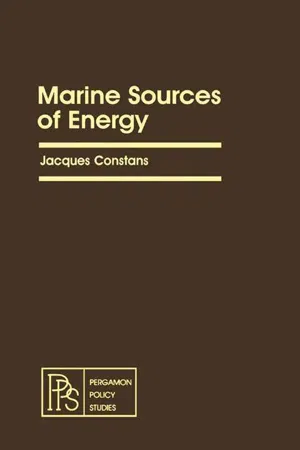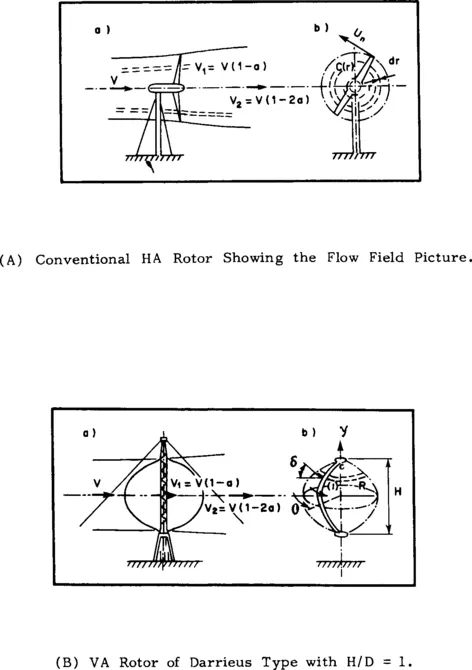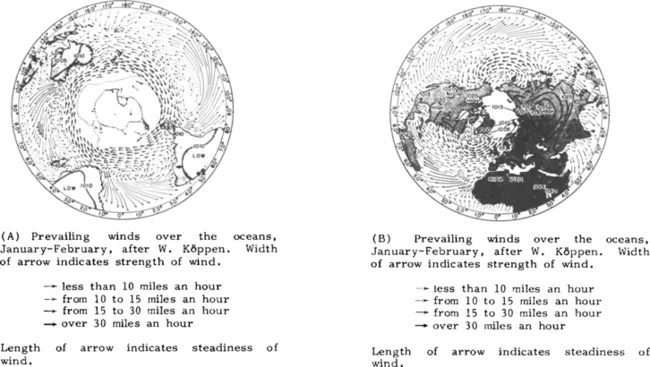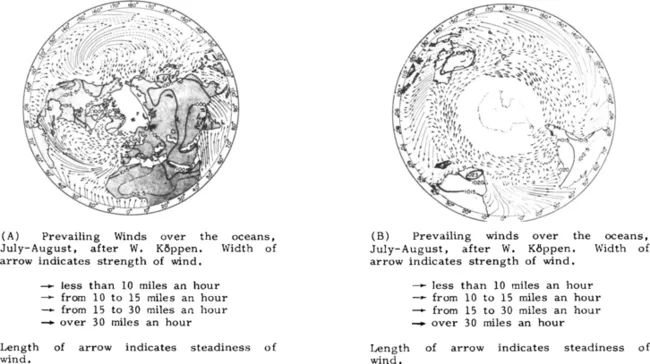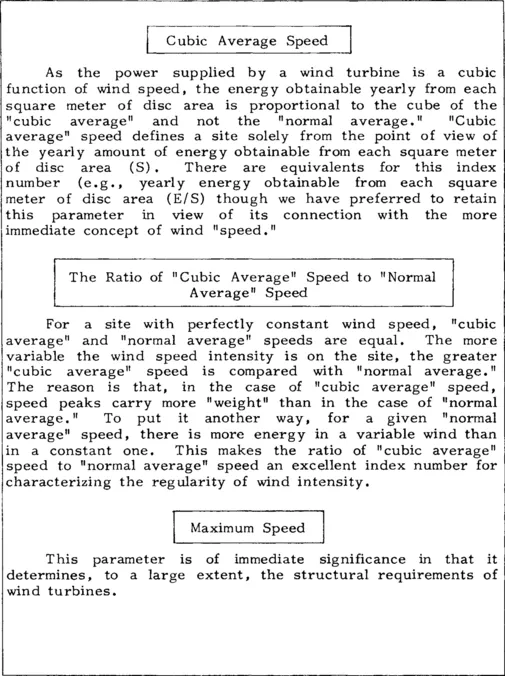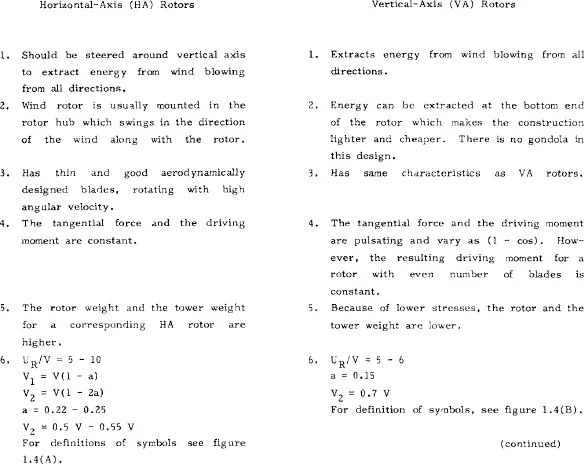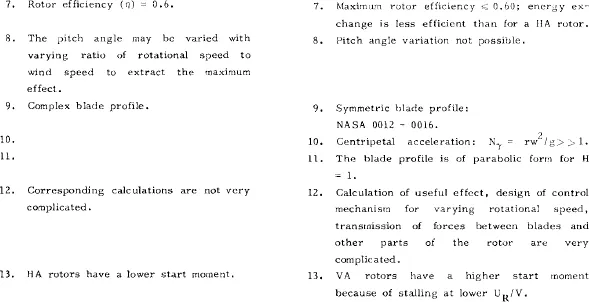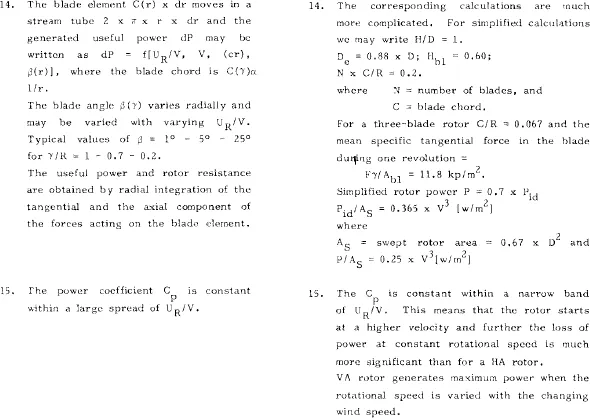Publisher Summary
A wind turbine should be a reliable low-cost machine capable of running for long periods with no breakdowns and no need for servicing. Current wind turbines are fast-running machines with a few blades linked directly through a gear system to electricity-generating machines. The present state of scientific knowledge and technology for small to medium-size horizontal turbines is such that no major breakthroughs are necessary to start an industrial development on a commercial basis; large turbines greater than one megawatt of both vertical and horizontal types, either land-based or offshore-based, requires effort and research before they reach the stage of industrial implementation. Offshore siting presents a number of attractive advantages but still some constraints, and an in-depth investigation of all aspects of such a possibility is highly recommended. Even in the case of small to medium-size turbines, the exact and proper role of wind machines on the energy generation market has to be defined and mass production techniques to meet an expected increase in demand have to be developed.
WEATHER FACTORS AND SITE CHARACTERIZATION
Wind is the movement of air masses caused by thermal gradients originating from the sun and the earth’s rotation. Wind energy has two definite advantages over primary (thermal) solar energy:
Fig. 1.4 Definition of the Symbols Used in Table 1.1.
– Wind energy is kinetic energy, that is, a noble energy, which means it can be harnessed for direct use whereas solar energy requires complex installations for transformation into mechanical energy.
– If the wind is sufficiently “good,” its energy density (mechanical kw per square meter of exposed surface) is much higher than that of solar energy. This is true whether the term “exposed surface” is taken to indicate the “swept disc area” of the blade stroke or, even more so, the physical surface area of the blade itself. Needless to say, in the case of solar energy, it is the surface of the collectors that is exposed.
These two characteristics, coupled with the fact that it is entirely pollution-free, make wind energy worth looking into, at least in areas favored with strong or constant winds.
One of the negative aspects of wind energy (common to practically all renewable sources of energy) is that it is irregular. This causes a problem for selecting sites with the most promising wind characteristics. However, such a drawback can also be seriously minimized by a judicious selection of those applications which best match the existing potentials.
Wind Power Sites: General Problems
The complex interaction of the sun with the atmosphere causes the displacement of hot masses of air. The study of the dynamics of auto-exalting phenomenon that follow unpredictable laws is a task of the meteorologist to which a reference is necessary for the study and characterization of suitable sites for the installation of wind turbines.
The maps of figures 1.1 and 1.2 show some uniform patterns and some prevailing winds in a very general view of the two hemispheres of the earth. This indicates that there is a main uniform wind circulation over the oceans with the continental regions acting as a barrier and giving very irregular distribution.
Fig. 1.1 Prevailing Winds Over the Oceans. Source: From Power from the Wind by Palmer Putnam, (c) 1948 by Litton Educational Publishing, Inc. Reprinted by permission of Van Nostrand Reinhold Company.
Fig. 1.2 Prevailing Winds Over the Oceans. Source: From Power from the Wind by Palmer Putnam, (c) 1948 by Litton Educational Publishing, Inc. Reprinted by permission of Van Nostrand Reinhold Company.
This distribution will depend on site topography, mountain conformation, and will vary very much from point to point. The velocity gradient will also vary with the elevation, due to the surface frictional losses: wind velocity decreases when approaching the ground according to a parabolic law.
The different characteristics of the ground will change the parabola’s parameters. This is evident in the building of tall towers for capturing more energy. Also, every hill will modify the wind flow. A hill with the appropriate profile can give the effect of an acceleration of the wind in two ways: one is due to the altitude and the other to the shape of the hill itself. A valley can concentrate the energy, increasing the speed as a funnel.
However, there are no general criteria for quantitative prediction of the effects of topography upon wind flow for choosing installation sites and it will be necessary to make an extensive series of yearly measurements in the various selected potential areas.
Offshore siting of wind turbines has definite advantages from the meteorological point of view due to reduced friction losses and may also have environmental advantages, especially for very large installations.
Site Characterization
Wind speed graphs for given sites are irregular curves of little or no help in judging site quality or comparing one site with another.
“Duration curves” (or equivalent histograms) are a little more helpful, but they can never be more than qualitative. (“Site A has a ‘flatter’ duration curve than B,” etc.)
However, various sites can be compared and the most promising one from the point of view of wind may be identified and selected through the calculation of a small number of index numbers, i.e. cubic average speed, the ratio of cubic average speed to normal average speed, and maximum speed (of which a brief description is given in Figure 1.3).
Fig. 1.3 Index Numbers for Sites Characterization.
To conclude, a site can be said to be “promising” from the wind point of view if it has a high ratio of “cubic average” speed to “normal average” speed, and a low maximum speed. These three values indicate the following characteristics of the utmost importance for the investigated site: good potential wind energy, regular wind, and no critical problems for the turbine structure which can be kept light and, consequently, cheap.
GENERAL ASPECTS OF CONSTRUCTION
Generally speaking, a wind turbine should be a reliable low-cost machine capable of running for long periods with no breakdowns and no need for servicing. Current wind turbines are fast-running machines with a few blades linked directly through a gear system to electricity-generating machines.
They usually consist of propeller, multiplier, safety brake, one or more electric motors, damping device, support, shafts, bearings and couplings.
Different kinds of wind turbines are now proposed and will be discussed in some details:
– the classical horizontal axis, for which no major technical breakthrough is necessary for further industrial development up to a rotor diameter of approximately 60 m (1 Mw maximum power);
– the vertical axis which is quite new for practical applications, and which still requires tests, especially concerning its resistance in the construction of big structures; and
– a new type, the vortex type which still requires basic research and development efforts.
A comparison between horizontal- and vertical-axis wind turbines is presented in Table 1.1.
Table 1.1
Technical Comparison of Horizontal-Axis and Vertical-Axis Rotors.
Horizontal-Axis Wind Turbines
